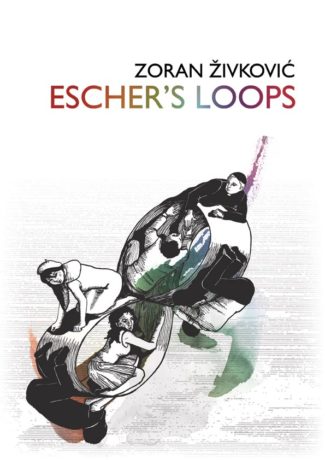 By ZORAN ZIVKOVIC (PS Publishing; 2010)
By ZORAN ZIVKOVIC (PS Publishing; 2010)
I haven’t read enough of Serbia’s Zoran Zivkovic to properly judge this novel’s place in his lexicon, but I strongly doubt he’ll ever write a richer or more confounding novel. ESCHER’S LOOPS is a series of interconnected narratives grouped into four parts—or loops—that flow into each other in the manner of a literary Möbius strip or, as the title portends, an M.C. Escher painting. Adding to the complexity is the fact that the characters and events of each loop resonate throughout the others; all four loops are self-contained, but to fully comprehend any of them you’ll need to read the entire book.
In the first loop we meet nine unnamed people (no one in the book is given a name)—a surgeon, a priest, an actress, a firefighter, a woman athlete, a waiter, an undertaker, a lion tamer and an auctioneer—who in nine similarly themed chapters all find themselves preoccupied about something they spied a subsequent character doing, because that character was preoccupied thinking about some other person who was him or herself preoccupied (and so on). Each chapter is structured with geometric precision, with events—a robbery, a man sticking his head in the mouth of a lion, the discovery of a mysterious chest—that recur in the subsequent loops, and an unexplained mystery at the heart of each anecdote. The end of chapter nine of course leads directly into the beginning of chapter one.
The subsequent loops continue in a similar vein, each introducing nine unnamed protagonists with similar predicaments. The second loop’s main characters are all trapped in some confined space with another individual, who relates a story of someone trapped in a confined space with a person who talks about someone else in a similar predicament. In the third loop a new set of characters all want to commit suicide for various reasons but are interrupted by the appearance of an unidentified old woman—the same old woman each time—who tells a story about someone else who wanted to commit suicide but was interrupted by an old woman. The fourth and final loop is the most complex of the lot, with each chapter containing multiple protagonists. The loop as a whole involves, among various other things, a chest discovered by somebody who always keeps its contents secret and, finally, a recitation of a dream that forms each subsequent chapter.
Since so many of the characters and events of the fourth loop—comprised as it is entirely of dreams—were introduced in the preceding three, it stands to reason that everything herein is a dream, with loop four the key to all the others…or not! The circular nature of the whole thing means you can start this book at virtually any point and get the same satisfaction as you would with a conventional reading. As for its contents and their chronology, there will likely be as many interpretations as there are readers of ESCHER’S LOOPS.
